Carbonyl compounds give different oxidation products with different reagents. Several oxidising agents can be used to oxides carbonyl compound. Ammonical silver nitrate (Tollens' reagent) oxidises aliphitic as well as aromatic aldehydes.
R−CHOTollenes reagent −−−−−−−−−−→R−COOH+Ag(Silver mirror)
Strong oxidising agents like KMnO4/H+,HNO3K2Cr2O7/H+ oxidise aldehydes as well as ketones. Open chain ketnoes on oxidation give mixture of two carboxylic acids. Oxidation of unsymmetrical ketones takes place acording to Popoff's rule. According to this rule, α whose bond breks in oxidation always belongs to the alkyl group which has more number of carbons.
The prduct of given reaction 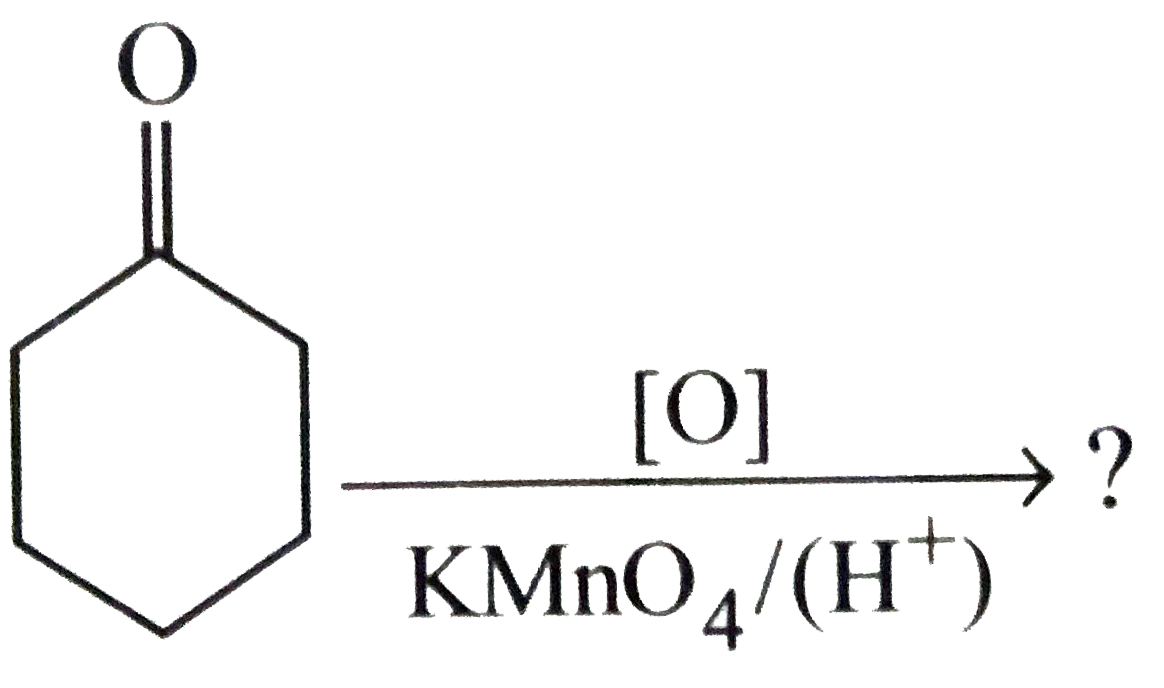 is
is
HOOC−(CH2)4−COOH
CH3(CH2)4−COOH

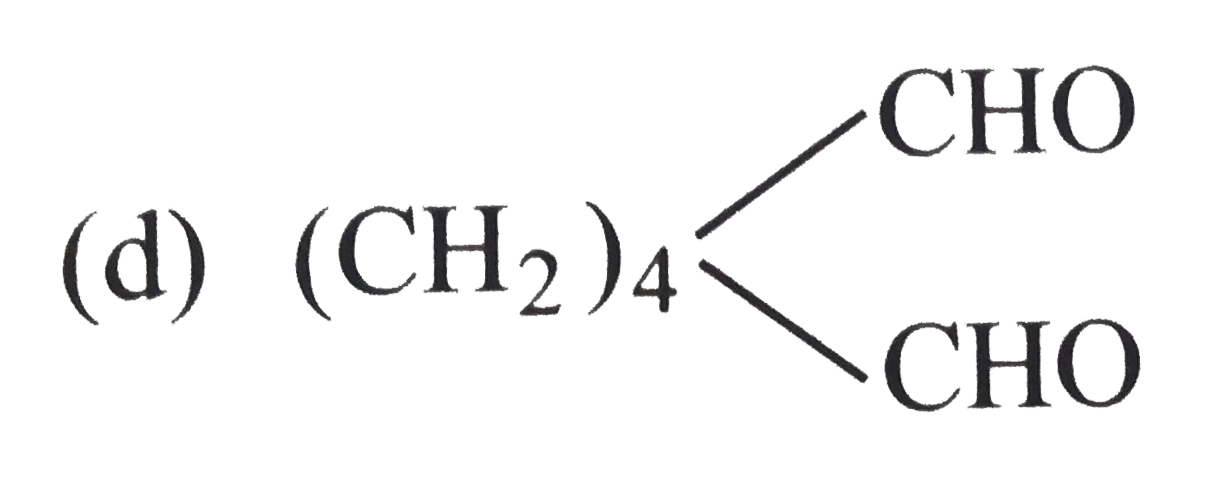
The correct Answer is:A
Topper's Solved these Questions
- ALDEHYDES AND KETONES BOOK - OP TANDONCHAPTER - ALDEHYDES AND KETONES EXERCISE - PASSAGE 3
5 Videos
- ALDEHYDES AND KETONES BOOK - OP TANDONCHAPTER - ALDEHYDES AND KETONES EXERCISE - PASSAGE 4
5 Videos
- ALDEHYDES AND KETONES BOOK - OP TANDONCHAPTER - ALDEHYDES AND KETONES EXERCISE - PASSAGE 1
5 Videos
- ALCOHOLS, PHENOLS AND ETHERSBOOK - OP TANDONCHAPTER - ALCOHOLS, PHENOLS AND ETHERSEXERCISE - SINGLE INETER ANSWER TYPE QUESTIONS / ALCOHOLS AND PHENOLS
15 Videos
- BASIC PRINCIPLESBOOK - OP TANDONCHAPTER - BASIC PRINCIPLESEXERCISE - SECTION V INTEGER ANSWER TYPE QUESTION
3 Videos
Similar Questions
Aldehyde with atleast one α hydrogen undergo aldol condensation. Two molecles of same or different aldehydes take part in such condensation. Ketones under similar condition give ketol condensatio. These reactions is best done with Ba(OH2) . intramolecular aldol condensation is given by dialhydes, diketones aldol condensation is given by dialdehydes, diketones or keto aldehydes. The diketones should be 2,3, 2,6, 2,7 and 2,8 diketones. Intramolecular aldol condensation is the best method for prepartion of five and six memebered ring. For example:
CH3−O∣∣C−H+CH3−O∣∣C−NaOH(dil.)−−−−−−−→CH3−OH∣C∣H−CH2CHO
Cl2−CHO gives aldol aondensation.
View SolutionAldehydes undergo disproportionation reaction in presence of aqueous NaOH. Simultaneous oxidation and reduction of a compound is scientifically called as disproportionatio.
Aldehydes having no α- hydrogen show this reaction called Cannizzaro's reactio. Few exceptions are also there to this generalisation.
The reaction may be represented as :
C6H5CHO+C6H5CHONaOH−−−→ΔC6H5COONa+C6H5CH2OH
Intramolecular Carrizzaro's reaction is also possible.
The aldehyde which shows Cannizzaro's reaction is :
View SolutionAldehydes and ketones ar specially susecptible to nucleophilic addition because carbonyl group
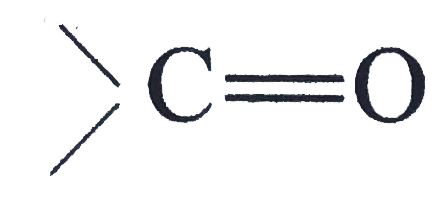 is polar (due to electronegativity difference between carbon and oxygen)
is polar (due to electronegativity difference between carbon and oxygen)
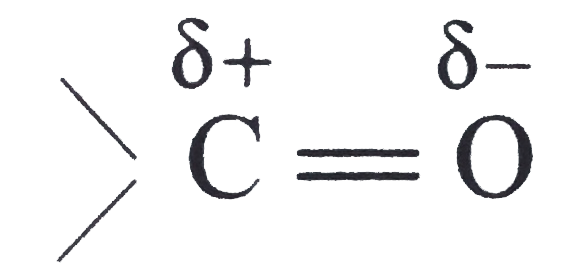
Positive charge on carbon makes it reactive towards the nucleophili. This addition is catalysed by acid.
Reactivity of carbonyl compound towards nucleophilic addition increases with increases in the electron deficiency at carbonyl carbon. Thus, (-I.E.)groups increase while (+I.E.) groups decrease the reactivity of carbonyl compound.
Which among the following is most reactive to give nucleophilic addtion ?
View SolutionHow many tetriary alcohols of formula C5H12O are possible ?
View SolutionIn the Avogadro's number 6.023×1023 the number of significant figures will be:
View SolutionCarbonyl compounds give different oxidation products with different reagents. Several oxidising agents can be used to oxides carbonyl compound. Ammonical silver nitrate (Tollens' reagent) oxidises aliphitic as well as aromatic aldehydes. R-CHOoverset("Tollenes reagent ")rarrR-COOH+Ag("Silver mirror") Strong oxidising agents like KMnO_(4)//H^(+),HNO_(3) K_(2)Cr_(2)O_(7)//H^(+) oxidise aldehydes as well as ketones. Open chain ketnoes on oxidation give mixture of two carboxylic acids. Oxidation of unsymmetrical ketones takes place acording to Popoff's rule. According to this rule, alpha whose bond breks in oxidation always belongs to the alkyl group which has more number of carbons. Tollens' reagent gives positive test with :
View SolutionCarbonyl compounds give different oxidation products with different reagents. Several oxidising agents can be used to oxides carbonyl compound. Ammonical silver nitrate (Tollens' reagent) oxidises aliphitic as well as aromatic aldehydes.
R−CHOTollenes reagent −−−−−−−−−−→R−COOH+Ag(Silver mirror)
Strong oxidising agents like KMnO4/H+,HNO3K2Cr2O7/H+ oxidise aldehydes as well as ketones. Open chain ketnoes on oxidation give mixture of two carboxylic acids. Oxidation of unsymmetrical ketones takes place acording to Popoff's rule. According to this rule, α whose bond breks in oxidation always belongs to the alkyl group which has more number of carbons.
The reagent which oxidises only aliphatic ketones is :
View SolutionCarbonyl compounds give different oxidation products with different reagents. Several oxidising agents can be used to oxides carbonyl compound. Ammonical silver nitrate (Tollens' reagent) oxidises aliphitic as well as aromatic aldehydes.
R−CHOTollenes reagent −−−−−−−−−−→R−COOH+Ag(Silver mirror)
Strong oxidising agents like KMnO4/H+,HNO3K2Cr2O7/H+ oxidise aldehydes as well as ketones. Open chain ketnoes on oxidation give mixture of two carboxylic acids. Oxidation of unsymmetrical ketones takes place acording to Popoff's rule. According to this rule, α whose bond breks in oxidation always belongs to the alkyl group which has more number of carbons.
2-Methylcycolhexanone on oxidation will give :
View SolutionCarbonyl compounds give different oxidation products with different reagents. Several oxidising agents can be used to oxides carbonyl compound. Ammonical silver nitrate (Tollens' reagent) oxidises aliphitic as well as aromatic aldehydes. R-CHOoverset("Tollenes reagent ")rarrR-COOH+Ag("Silver mirror") Strong oxidising agents like KMnO_(4)//H^(+),HNO_(3) K_(2)Cr_(2)O_(7)//H^(+) oxidise aldehydes as well as ketones. Open chain ketnoes on oxidation give mixture of two carboxylic acids. Oxidation of unsymmetrical ketones takes place acording to Popoff's rule. According to this rule, alpha whose bond breks in oxidation always belongs to the alkyl group which has more number of carbons. Which of the following ismost reactive towards oxidation ?
View SolutionThe reagent which oxidise aldehyde and ketone is
View SolutionAssertion: Aldehydes and ketones, both react with tollens' reagent to form silver mirror.
Reason: Both, aldehydes and ketones contain a carbonyl group.
View SolutionIn swern method of oxidation of alcohols to aldehyde/ketones ______ is used as an oxidising agent.
View SolutionAssertion : Wolf kishner and clemmensen's reagents both bring about the oxidation of aldehydes and ketones.
Reason : Clemmensen's reagent is a powerful oxidising agent
View SolutionThe mixture of the following four aromatic compounds on oxidation by strong oxidising agent gives :
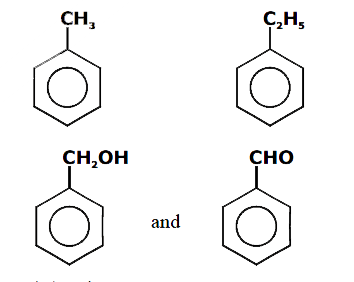
View SolutionThe oxidising agent used to prepare aldehyde (or) ketone from alcohol, the reagent usedis ………………… .
View Solution
